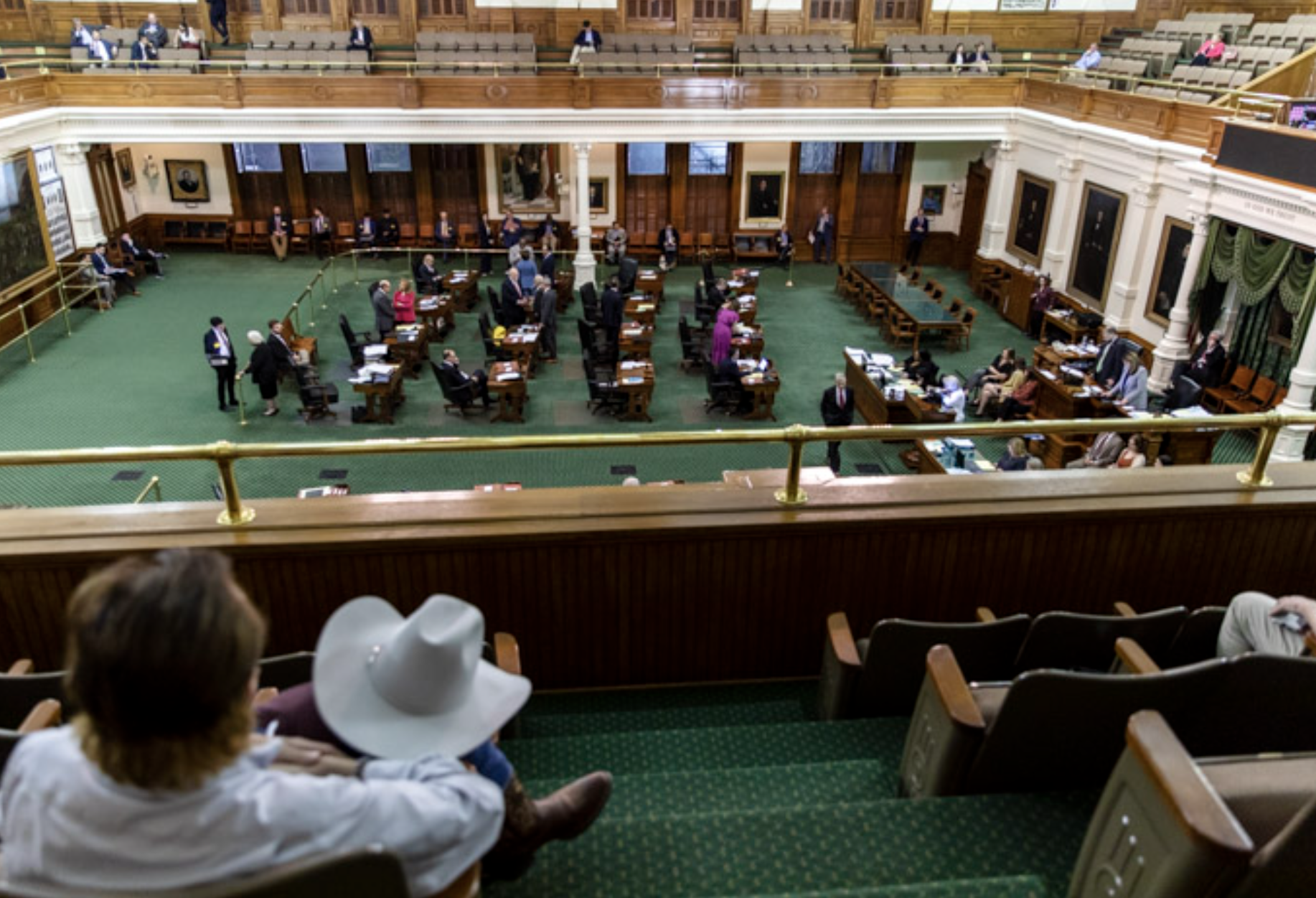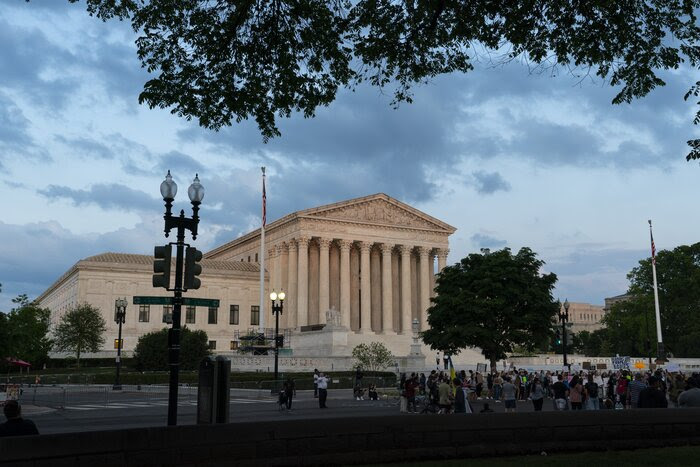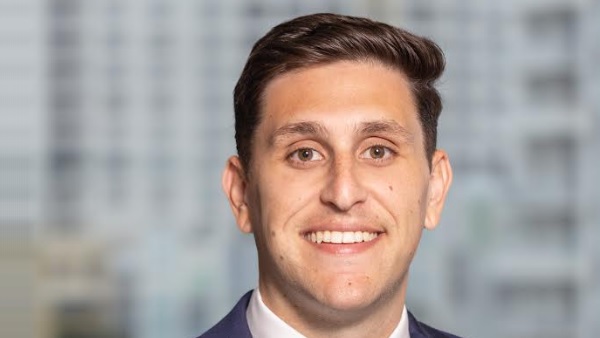‘When Local Control Turns Into Local Out Of Control’: The Battle Over Who Should Fix Texas’ Housing Woes
This is Part 3 of a Bisnow investigative series that explores the “Texas Miracle” — the Lone Star State’s multidecade strategy that attracted hundreds of U.S. companies, millions of people and billions of dollars within its borders. Texas became the ninth-largest economy in the world, but the nation’s housing crisis is hurtling the state toward an uncomfortable reality: It’s becoming unaffordable. Read Part 1 here. Part 2 is here.
Housing advocates weren’t confident that sweeping reform would be accomplished during Texas’ 88th legislative session, and for the most part, they were correct. As the biennial proceedings came to a close May 29, only a handful of the more than 200 bills aimed at housing relief were on their way to the governor’s desk.
Developers, property rights groups, academics, affordability advocates and private citizens spent months testifying before lawmakers about the threat posed by a shortage of housing supply. Elected officials on the right and left put aside differences to rally for a common cause: more housing in Texas for more Texans who need it.
It appears that much of their breath was wasted — at least until lawmakers meet again in two years. The fight to maintain local control coupled with opposition from powerful neighborhood groups and their elected officials was enough to derail the progress many hoped would be made.

Photo: Texas Senate
Constituents look on during during Texas’ 88th legislative session.
“I’m never confident about anything passing just because our legislative process in particular is like Schoolhouse Rock! meets Friday the 13th,” Dallas Builders Association Executive Director Phil Crone said. “It’s just designed to kill every bill possible.”
Advocates notched some wins, including the creation of a state low-income tax credit program and the preservation of Texas’ public facility corporation program. But bills that would have loosened restrictions on building setbacks and heights, lot sizes and accessory dwelling units failed to go the distance.
Despite the outcome, the bipartisan campaign to increase supply made it clear that a growing number of lawmakers recognize Texas has a problem — one that will be exacerbated by projections showing the state’s population could nearly double to 47.4 million by 2050 with housing supply already behind by at least 322,000 units.
That dawning consensus sparked a conversation around whose problem housing is to solve. At the heart of the debate is whether centralizing land use is the best path to change or if snatching authority away from cities and counties is a brash overreach of power.
“There has always been this tug of war between government — it’s nothing new,” former Gov. Rick Perry, who claimed the Texas Miracle as his legacy after serving from 2000 to 2015, told Bisnow. “Finding the balance between thoughtful, fair regulation and overregulation has been the bane of our existence for some time. There are some folks who say we don’t regulate enough, and there are other folks that say they’re overregulating us and it’s costing us.”
During the session, a wave of advocates called for more centralized power to build density and drive down costs. But cities and counties insist policies that dictate housing supply should be made at the local level, with dozens of staff members and elected officials testifying in opposition to bills that sought to infringe on their turf.
“It’s local governments that know best how much density is attainable,” Texas Municipal League Executive Director Bennett Sandlin said. “Even if you think that from a state level we need to encourage more density to generate more affordable housing across the state, you can’t get past the fact that state legislators have no idea what type of infrastructure is in place in those neighborhoods that are going to be affected by their proposal.”
‘God-Given Prerogative’ Or ‘Weak Sauce’?
Land use authority once rested with state governments, but in the early 20th century, states distributed more of that oversight to cities and counties, said Jenny Schuetz, a senior fellow at Brookings Metro. Now, as a lack of supply reaches crisis levels across the U.S., some states are feeling the impact on their bottom lines and are beginning to take that power back.
“Local governments assume it is their God-given prerogative to write zoning, but it’s actually not,” Schuetz said. “The state has the legal authority to set guardrails on what localities are able to do.”

Photo: Wikimedia Commons/Larry D. Moore
Downtown Austin from the Palmer Events Center in 2019.
Municipal governments have made it illegal to build apartments on roughly three-quarters of America’s residential land, according to The Brookings Institution. In cities like Austin, widely perceived as a ground zero in America’s affordability crisis, Schuetz said that share has been as high as 80%.
“Local governments really create the environment in which housing is produced,” she said. “That can have big implications when they set rules that are much more restrictive than what the market wants to build.”
The majority of bills that would have preempted local development codes didn’t survive the session, but the fact that so many were proposed is something of a wake-up call, Sandlin said. Cities and counties that once rested on their laurels may finally be motivated to take action or risk losing control, he said.
“If you know it’s coming and you know the dangers of a one-size-fits-all, maybe that gives the impetus for us to study and figure out some best practices so we don’t get that top-down mandate,” Sandlin said.
The danger of blanket legislation lies in having to abide by rules that might make sense for one community but not another, Sandlin said. Critics of some preemption bills claim they are a conservative legislature’s way of stripping control from larger cities, which tend to lean liberal.
Democrats were behind the failure of several bills that would have removed barriers to development, including legislation around ADUs, lot sizes and building height requirements. Those lawmakers are rightfully skeptical of bills that roll back local governance, given the harm preemption laws have historically had on urban districts, said Ben Martin, research director for advocacy group Texas Housers.
“If land use reform is going to continue to be advocated for at the state level, there’s going to need to be some kind of vision or reconciliation about how this is different and more progressive than other Republican efforts to diminish local control in ways that harm cities,” he said.
State Rep. Donna Howard, a Democrat from Austin, took to Twitter to explain to angry constituents why she voted against ADUs.
Those arguments didn’t go down well with some Texans.
Putting Up Guardrails
Those in favor of preemption say the state has an obligation to step in when existing mechanisms fall short of addressing a growing problem. Thus far, housing affordability is an issue cities and counties have failed to solve, Crone said.
“There are times when local control turns into local out of control, and the state has to jump in and put some guardrails up,” he said.
Municipalities in Texas have for years assumed that a right-leaning government would never mimic the regulatory actions of a progressive state like California and impose top-down solutions. But movement in red states and the number of land use-related bills filed by Texas lawmakers this year challenged that long-held belief.

Photo: Pixabay/alexman89
“This session caught our attention,” Sandlin said. “This density thing, we thought it was more of a coastal problem, more of a right-versus-left sort of deal. We didn’t realize the extent to which everybody is thinking about it.”
Density bonuses are one tool that most major cities have embraced as a low-cost way of achieving affordability without the arduous rezoning process. These programs typically trade things like more units, taller buildings and shorter setbacks for rent-restricted units.
Dallas’ Mixed Income Housing Development Bonus program had 38 projects in various stages of development at the end of March. In Austin, the city’s Affordability Unlocked program loosens requirements for density and parking, but at least half of a project’s units must be set aside as affordable.
The initiative has thus far resulted in seven projects comprising 392 affordable units, according to data from the city of Austin. Five more projects that would add another 429 affordable units were almost complete as of early May.
Housing advocates view any progress as a win, but those additions are a drop in the bucket compared to the total number of multifamily units permitted in Austin each year, which a 2020 city-commissioned study estimated to be upward of 4,100 on average.
The success of initiatives like Affordability Unlocked is threatened by resident opposition to density. A lawsuit filed by the same group that tried to derail the city’s rewrite of its Land Development Code in 2020 is now calling for the program to be repealed based on allegations that Austin officials failed to notify affected homeowners about zoning cases.
The lawsuit also calls for a judge to stay new development until concerns are resolved.
“That is truly concerning on our part because we really believe that we should be continuing to move forward so we don’t have even more of a crisis than we have right now,” said Nora Linares-Moeller, executive director of HousingWorks Austin, adding litigation could stop thousands of new housing units from being built.
This is where state intervention can be effective in safeguarding existing programs while shielding local officials from opposition and the political pressures of NIMBYism, Schuetz said. Senate Bill 491 would have overridden policies in cities like Austin that prevent apartment buildings from being built near single-family homes, but it died before making it to a vote.
“There’s essentially a political process that’s protecting the rights of incumbent homeowners at the expense of basically everybody else,” Schuetz said. “The state government getting involved would benefit a lot of additional groups at the expense of people who don’t want more neighbors.”
When The State Steps In: Could It Happen In Texas?
States across the political spectrum, including California, Oregon, Montana and Florida, have enacted top-down policies in the past few years aimed at advancing the production of housing and bringing down costs.
In most cases, it is too early to tell whether legislation has been effective, but Scheutz said state intervention usually implies the problem has become too big to ignore.

Photo: Wikimedia Commons/Leonard J. DeFrancisci
“What we’re seeing across a number of states, including Texas, is that when enough local governments make it hard to build housing, there are economic consequences that are bigger than any city or town, sometimes even bigger than an entire region,” Schuetz said. “And that’s usually when the state gets involved.”
A surge in housing costs driven by inadequate supply is hindering Texas’ track record of recruiting businesses from out of state. After hitting a record high in 2021, the number of corporate relocations dramatically declined, and many experts say increased costs are in large part to blame.
“A lack of affordability impacts economic development and the ability to attract and keep companies in areas throughout Texas,” said Debra Guerrero, senior vice president of strategic partnerships and government affairs for multifamily developer The NRP Group. “We have to have choices for people, and the more choices you have for people near where they work, you create more successful communities.”
California passed several bills and proposed a few more intended to increase the production of affordable units and strengthen tenant protections in a bid to solve the state’s severe housing shortage and homelessness epidemic.
The state’s historic duplex bill, signed by Gov. Gavin Newsom in late 2021, essentially overrides single-family zoning by allowing owners to subdivide their lots or convert homes to duplexes regardless of local ordinances. The efficacy of that legislation, intended to kick-start supply, has been weak at best, with a January 2023 study by the University of California, Berkeley Terner Center for Housing Innovation showing that Senate Bill 9 activity is limited or nonexistent across 13 cities.
Texas stopped short of approving some bills that would have undermined a local government’s ability to dictate land use. Senate Bill 1412, which would have prohibited cities and counties from banning ADUs, narrowly failed to pass toward the end of the session. This should come as no surprise, housing advocates say, given how disparate Texas is from a state like California.
“They have a different balance of state and local power and a different political atmosphere,” said Christopher Ptomey, executive director for the Urban Land Institute’s Terwilliger Center for Housing. “I just can’t imagine anyone would stay in office very long trying to put those kinds of policies in place in Texas.”
Yet the failure of many preemption bills doesn’t mean cities are off the hook, said Roger Arriaga, executive director of the Texas Affiliation of Affordable Housing Providers. Many of the proposed laws that were submitted for the first time will likely be reintroduced in two years.
“I fully expect they will come back again,” he said. “Shame on you if you’re a city that saw that happening and chose not to act on it or at least take it under advisement before the next session comes around.”
Other states more politically in line with Texas have overridden local sovereignty. Florida Gov. Ron DeSantis in late March signed the Live Local Act, which not only sets aside funds for affordable housing but also supersedes city and county regulations around zoning, density and height requirements.
Developers have since rushed to take advantage of looser rules.
“For the first time in so many years, they’re able to build residential on land where it was previously prohibited,” Government Law Group attorney Keith Poliakoff told Bisnow. “And they’re finally given the density and height necessary to make the development of those blocks profitable.”

Photo: Flickr/Texas State Library and Archives Commission
Texas Capitol in Austin
The passage of House Bill 2127, authored by Rep. Dustin Burrows, a Republican from Lubbock, is a massive hit to local control because cities and counties can no longer enact ordinances that go further than what is already allowed under state law. The bill also overturns any conflicting regulations that are already on the books.
Known colloquially as the Death Star Bill, the legislation could be disastrous for low-income tenants, Martin said. The law is vague, he said, but will essentially prevent local governments from making their own decisions when it comes to eviction protections, the rights of tenants to organize and the administration of local rental assistance.
“Many small successes offset by one very large setback — that’s how I would characterize this session,” he said, adding that preemption of local development codes is exempt from the law.
Supporters like Gov. Greg Abbott said the bill was intended to remove regulations that hinder business and hurt the state’s economy. Opponents say the law targets blue cities and has far-reaching implications for labor rights, noise complaints and nondiscrimination ordinances in addition to tenants rights.
“Cities are going to be very cautious about adopting new innovations and regulations to protect low-income people and help them stay stably housed,” Martin said. “Existing protections in cities around the state may or may not be on the chopping block, and we’re going to have an uneven response from different cities in terms of whether they’re going to take a proactive or reactive approach to their current activities and ordinances.”
An Experiment Gone (Partially) Wrong
When Texas has taken a more heavy-handed role in creating more housing, the outcome hasn’t always been successful. Public facility corporations, approved by the legislature in 2015, are widely viewed as a failed attempt to bring about affordability.
PFCs grant a 100% property and sales tax exemption to developers who dedicate half of their units as affordable. Thirty tax-exempt apartment projects sponsored by PFCs were acquired, completed or under development between 2016 and 2020. They had a combined property value of $1.2B and annual property tax exemption of $32M, according to a study by researchers at the University of Texas.
Rep. Gary Gates, a Republican from Richmond, estimated that since 2020, another 225 PFC deals have removed more than $10B from property tax rolls.
Allegations of rampant abuse prompted state legislators to introduce bills this session to reform the program or repeal it altogether. Opponents of the incentive argued it provides a windfall for developers without achieving the intended benefit of improving affordability.
“Big private equity shops have come into our state and purchased multifamily properties using this structure just to avoid paying taxes, significantly increasing the property’s cash flow, significantly improving their bottom line, with little to no benefit in the ultimate goal of real affordability,” Nathan Kelley, a trustee with Houston Regional Business Coalition and a developer himself, testified at an April 12 Senate committee hearing.
PFCs are a useful tool and can be a critical piece of getting developers to invest in low-income areas of Texas, housing advocates argued. But some thought the incentive was too broken to fix. Senate Bill 805, authored by Sen. Paul Bettencourt, a Republican from Houston, would have removed the tool altogether, but it died in committee.
“Get rid of it,” Molly Cook, an emergency room nurse and Democratic candidate for state Senate District 15, said at the April committee hearing. “It didn’t work. It was a mistake. We can come back, we can write it again next year and make it work. But for now, this is a trauma patient — put a tourniquet on it and stop the bleeding.”
Of the six PFC bills introduced this session, only House Bill 2071 made it to the governor’s desk. The bill, authored by Rep. Jacey Jetton, a Republican from Richmond, would close loopholes in the statute, including one that allowed PFCs to be approved without the consent of local taxing jurisdictions.
New rent and income restrictions are also included to ensure projects are achieving the goal of adding more affordable units.
“The bill added some protections, some transparency and is now going to have a lot more oversight,” Arriaga said. “We saved the program from being eliminated, which is huge.”
Lack Of Action ‘A Limit To Our Success’
Whether unlocking density would translate to more affordable units is a subject of much debate. Those who identify as YIMBYs say broader access to land for development will lead to more homes and lower prices. But skeptics say that approach could lead to more high-end product and very little affordability.
In a study conducted at the University of Minnesota, researchers found that new construction in Minneapolis pushed up rents at nearby older buildings by 6.7% compared to similar buildings that weren’t in gentrified areas. New construction had the opposite effect on higher-priced housing, where rents were 1.7% lower near new construction than in the comparison group.
The solution should land somewhere in the middle, Arriaga said.

Photo: Flickr/Department of Housing and Urban Development
“If you have no oversight on what is created as affordable, that could result in a proliferation of luxury units, but it could also create the slums of the future, which we don’t want by any stretch,” he said. “There has to be a reasonable approach to housing in both camps. It can’t be NIMBY, and it can’t be yes to everything.”
Land use reform is just one piece of the affordability puzzle, Texas Housers Communications Manager Michael Depland said. The state must also expand incentives and funding for low-income housing and drastically improve renters rights.
“We cannot reform land use and declare ‘mission accomplished,’” Depland said in an email. “These fights require the same amount of muscle and attention to effect change for low-income households.”
House Bill 1058 establishes a state low-income tax credit program and was on its way to the governor’s desk as of publication time. After three sessions of trying — and failing — to push the program through, Arriaga said the bill is considered a pivotal win in the fight for housing relief.
The program would add another $25M each year to the roughly $80M Texas receives from the federal government, Arriaga said. Advocates hope lawmakers will beef up that allocation once they see the impact to the state’s bottom line.
“It’s going to allow some developments to get funded that otherwise would not get funded,” Arriaga said. “We’re hoping the legislature will see the value and potentially up what the program is able to distribute, as other states have across the country.”
Traditionalists like Perry believe the state should stay in its lane and let the housing market correct on its own. Eventually, he said, the private sector will respond to demand for cheaper housing without the state forcing its hand.
“I don’t think that’s government’s role,” Perry said. “If you become so popular that the market is able to raise costs to where people can’t afford it, at some time in the future, there will be a self-correction.”
In the first few hours of a special session last week, the Senate passed a $17.6B property tax relief package that, if signed, would save individual homeowners about $681 per year by increasing the homestead exemption by $60K and compressing the school district tax rate.
Perry called this an example of state intervention that isn’t an overreach of power.
“That’s a great example of government sending a message that ‘We got it, we let property taxes get too hot,’” he said. “That’s a major part of the cost of housing in Texas.”
But legislation like Senate Bill 1 does nothing to move the needle on adding supply and bringing down costs.
Housing advocates said all levels of government must partner with the private sector to keep the issue of housing affordability from spiraling further out of control. A blended approach will have to work for now if Texas wants to maintain its economic superiority, they say.
“This isn’t housing for housing’s sake,” Arriaga said. “It’s housing for the economy. Only when everybody is well-employed and well-housed are we going to see the economy continue to prosper. We’re doing great, but there’s a limit to our success if we can’t fix this issue.”
Article Link: ‘When Local Control Turns Into Local Out Of Control’: The Battle Over Who Should Fix Texas’ Housing Woes
Author: OLIVIA LUECKEMEYER








